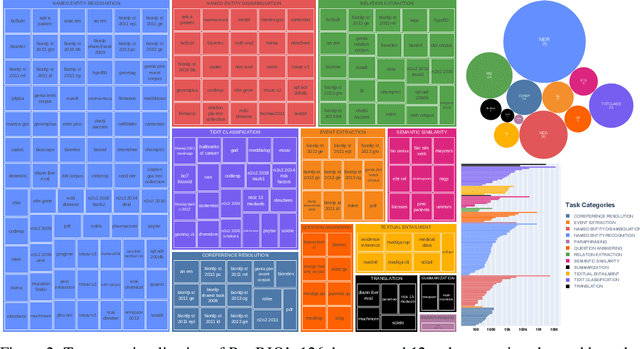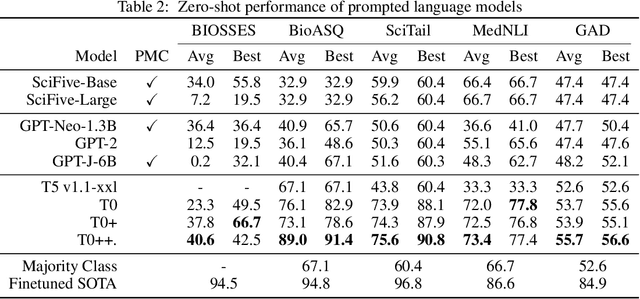Jonas Golde
Empirical Evaluation of Knowledge Distillation from Transformers to Subquadratic Language Models
Apr 19, 2025



Abstract:Knowledge distillation is a widely used technique for compressing large language models (LLMs) by training a smaller student model to mimic a larger teacher model. Typically, both the teacher and student are Transformer-based architectures, leveraging softmax attention for sequence modeling. However, the quadratic complexity of self-attention at inference time remains a significant bottleneck, motivating the exploration of subquadratic alternatives such as structured state-space models (SSMs), linear attention, and recurrent architectures. In this work, we systematically evaluate the transferability of knowledge distillation from a Transformer teacher to nine subquadratic student architectures. Our study aims to determine which subquadratic model best aligns with the teacher's learned representations and how different architectural constraints influence the distillation process. We also investigate the impact of intelligent initialization strategies, including matrix mixing and query-key-value (QKV) copying, on the adaptation process. Our empirical results on multiple NLP benchmarks provide insights into the trade-offs between efficiency and performance, highlighting key factors for successful knowledge transfer to subquadratic architectures.
MastermindEval: A Simple But Scalable Reasoning Benchmark
Mar 11, 2025



Abstract:Recent advancements in large language models (LLMs) have led to remarkable performance across a wide range of language understanding and mathematical tasks. As a result, increasing attention has been given to assessing the true reasoning capabilities of LLMs, driving research into commonsense, numerical, logical, and qualitative reasoning. However, with the rapid progress of reasoning-focused models such as OpenAI's o1 and DeepSeek's R1, there has been a growing demand for reasoning benchmarks that can keep pace with ongoing model developments. In this paper, we introduce MastermindEval, a simple, scalable, and interpretable deductive reasoning benchmark inspired by the board game Mastermind. Our benchmark supports two evaluation paradigms: (1) agentic evaluation, in which the model autonomously plays the game, and (2) deductive reasoning evaluation, in which the model is given a pre-played game state with only one possible valid code to infer. In our experimental results we (1) find that even easy Mastermind instances are difficult for current models and (2) demonstrate that the benchmark is scalable to possibly more advanced models in the future Furthermore, we investigate possible reasons why models cannot deduce the final solution and find that current models are limited in deducing the concealed code as the number of statement to combine information from is increasing.
BabyHGRN: Exploring RNNs for Sample-Efficient Training of Language Models
Dec 20, 2024



Abstract:This paper explores the potential of recurrent neural networks (RNNs) and other subquadratic architectures as competitive alternatives to transformer-based models in low-resource language modeling scenarios. We utilize HGRN2 (Qin et al., 2024), a recently proposed RNN-based architecture, and comparatively evaluate its effectiveness against transformer-based baselines and other subquadratic architectures (LSTM, xLSTM, Mamba). Our experimental results show that BABYHGRN, our HGRN2 language model, outperforms transformer-based models in both the 10M and 100M word tracks of the challenge, as measured by their performance on the BLiMP, EWoK, GLUE and BEAR benchmarks. Further, we show the positive impact of knowledge distillation. Our findings challenge the prevailing focus on transformer architectures and indicate the viability of RNN-based models, particularly in resource-constrained environments.
Familiarity: Better Evaluation of Zero-Shot Named Entity Recognition by Quantifying Label Shifts in Synthetic Training Data
Dec 13, 2024



Abstract:Zero-shot named entity recognition (NER) is the task of detecting named entities of specific types (such as 'Person' or 'Medicine') without any training examples. Current research increasingly relies on large synthetic datasets, automatically generated to cover tens of thousands of distinct entity types, to train zero-shot NER models. However, in this paper, we find that these synthetic datasets often contain entity types that are semantically highly similar to (or even the same as) those in standard evaluation benchmarks. Because of this overlap, we argue that reported F1 scores for zero-shot NER overestimate the true capabilities of these approaches. Further, we argue that current evaluation setups provide an incomplete picture of zero-shot abilities since they do not quantify the label shift (i.e., the similarity of labels) between training and evaluation datasets. To address these issues, we propose Familiarity, a novel metric that captures both the semantic similarity between entity types in training and evaluation, as well as their frequency in the training data, to provide an estimate of label shift. It allows researchers to contextualize reported zero-shot NER scores when using custom synthetic training datasets. Further, it enables researchers to generate evaluation setups of various transfer difficulties for fine-grained analysis of zero-shot NER.
PECC: Problem Extraction and Coding Challenges
Apr 29, 2024



Abstract:Recent advancements in large language models (LLMs) have showcased their exceptional abilities across various tasks, such as code generation, problem-solving and reasoning. Existing benchmarks evaluate tasks in isolation, yet the extent to which LLMs can understand prose-style tasks, identify the underlying problems, and then generate appropriate code solutions is still unexplored. Addressing this gap, we introduce PECC, a novel benchmark derived from Advent Of Code (AoC) challenges and Project Euler, including 2396 problems. Unlike conventional benchmarks, PECC requires LLMs to interpret narrative-embedded problems, extract requirements, and generate executable code. A key feature of our dataset is the complexity added by natural language prompting in chat-based evaluations, mirroring real-world instruction ambiguities. Results show varying model performance between narrative and neutral problems, with specific challenges in the Euler math-based subset with GPT-3.5-Turbo passing 50% of the AoC challenges and only 8% on the Euler problems. By probing the limits of LLMs' capabilities, our benchmark provides a framework to monitor and assess the subsequent progress of LLMs as a universal problem solver.
Large-Scale Label Interpretation Learning for Few-Shot Named Entity Recognition
Mar 21, 2024



Abstract:Few-shot named entity recognition (NER) detects named entities within text using only a few annotated examples. One promising line of research is to leverage natural language descriptions of each entity type: the common label PER might, for example, be verbalized as ''person entity.'' In an initial label interpretation learning phase, the model learns to interpret such verbalized descriptions of entity types. In a subsequent few-shot tagset extension phase, this model is then given a description of a previously unseen entity type (such as ''music album'') and optionally a few training examples to perform few-shot NER for this type. In this paper, we systematically explore the impact of a strong semantic prior to interpret verbalizations of new entity types by massively scaling up the number and granularity of entity types used for label interpretation learning. To this end, we leverage an entity linking benchmark to create a dataset with orders of magnitude of more distinct entity types and descriptions as currently used datasets. We find that this increased signal yields strong results in zero- and few-shot NER in in-domain, cross-domain, and even cross-lingual settings. Our findings indicate significant potential for improving few-shot NER through heuristical data-based optimization.
Fabricator: An Open Source Toolkit for Generating Labeled Training Data with Teacher LLMs
Sep 18, 2023



Abstract:Most NLP tasks are modeled as supervised learning and thus require labeled training data to train effective models. However, manually producing such data at sufficient quality and quantity is known to be costly and time-intensive. Current research addresses this bottleneck by exploring a novel paradigm called zero-shot learning via dataset generation. Here, a powerful LLM is prompted with a task description to generate labeled data that can be used to train a downstream NLP model. For instance, an LLM might be prompted to "generate 500 movie reviews with positive overall sentiment, and another 500 with negative sentiment." The generated data could then be used to train a binary sentiment classifier, effectively leveraging an LLM as a teacher to a smaller student model. With this demo, we introduce Fabricator, an open-source Python toolkit for dataset generation. Fabricator implements common dataset generation workflows, supports a wide range of downstream NLP tasks (such as text classification, question answering, and entity recognition), and is integrated with well-known libraries to facilitate quick experimentation. With Fabricator, we aim to support researchers in conducting reproducible dataset generation experiments using LLMs and help practitioners apply this approach to train models for downstream tasks.
Non-rigid Point Cloud Registration for Middle Ear Diagnostics with Endoscopic Optical Coherence Tomography
Apr 26, 2023Abstract:Purpose: Middle ear infection is the most prevalent inflammatory disease, especially among the pediatric population. Current diagnostic methods are subjective and depend on visual cues from an otoscope, which is limited for otologists to identify pathology. To address this shortcoming, endoscopic optical coherence tomography (OCT) provides both morphological and functional in-vivo measurements of the middle ear. However, due to the shadow of prior structures, interpretation of OCT images is challenging and time-consuming. To facilitate fast diagnosis and measurement, improvement in the readability of OCT data is achieved by merging morphological knowledge from ex-vivo middle ear models with OCT volumetric data, so that OCT applications can be further promoted in daily clinical settings. Methods: We propose C2P-Net: a two-staged non-rigid registration pipeline for complete to partial point clouds, which are sampled from ex-vivo and in-vivo OCT models, respectively. To overcome the lack of labeled training data, a fast and effective generation pipeline in Blender3D is designed to simulate middle ear shapes and extract in-vivo noisy and partial point clouds. Results: We evaluate the performance of C2P-Net through experiments on both synthetic and real OCT datasets. The results demonstrate that C2P-Net is generalized to unseen middle ear point clouds and capable of handling realistic noise and incompleteness in synthetic and real OCT data. Conclusion: In this work, we aim to enable diagnosis of middle ear structures with the assistance of OCT images. We propose C2P-Net: a two-staged non-rigid registration pipeline for point clouds to support the interpretation of in-vivo noisy and partial OCT images for the first time. Code is available at: https://gitlab.com/nct\_tso\_public/c2p-net.
BLOOM: A 176B-Parameter Open-Access Multilingual Language Model
Nov 09, 2022Abstract:Large language models (LLMs) have been shown to be able to perform new tasks based on a few demonstrations or natural language instructions. While these capabilities have led to widespread adoption, most LLMs are developed by resource-rich organizations and are frequently kept from the public. As a step towards democratizing this powerful technology, we present BLOOM, a 176B-parameter open-access language model designed and built thanks to a collaboration of hundreds of researchers. BLOOM is a decoder-only Transformer language model that was trained on the ROOTS corpus, a dataset comprising hundreds of sources in 46 natural and 13 programming languages (59 in total). We find that BLOOM achieves competitive performance on a wide variety of benchmarks, with stronger results after undergoing multitask prompted finetuning. To facilitate future research and applications using LLMs, we publicly release our models and code under the Responsible AI License.
BigBIO: A Framework for Data-Centric Biomedical Natural Language Processing
Jun 30, 2022



Abstract:Training and evaluating language models increasingly requires the construction of meta-datasets --diverse collections of curated data with clear provenance. Natural language prompting has recently lead to improved zero-shot generalization by transforming existing, supervised datasets into a diversity of novel pretraining tasks, highlighting the benefits of meta-dataset curation. While successful in general-domain text, translating these data-centric approaches to biomedical language modeling remains challenging, as labeled biomedical datasets are significantly underrepresented in popular data hubs. To address this challenge, we introduce BigBIO a community library of 126+ biomedical NLP datasets, currently covering 12 task categories and 10+ languages. BigBIO facilitates reproducible meta-dataset curation via programmatic access to datasets and their metadata, and is compatible with current platforms for prompt engineering and end-to-end few/zero shot language model evaluation. We discuss our process for task schema harmonization, data auditing, contribution guidelines, and outline two illustrative use cases: zero-shot evaluation of biomedical prompts and large-scale, multi-task learning. BigBIO is an ongoing community effort and is available at https://github.com/bigscience-workshop/biomedical
 Add to Chrome
Add to Chrome Add to Firefox
Add to Firefox Add to Edge
Add to Edge